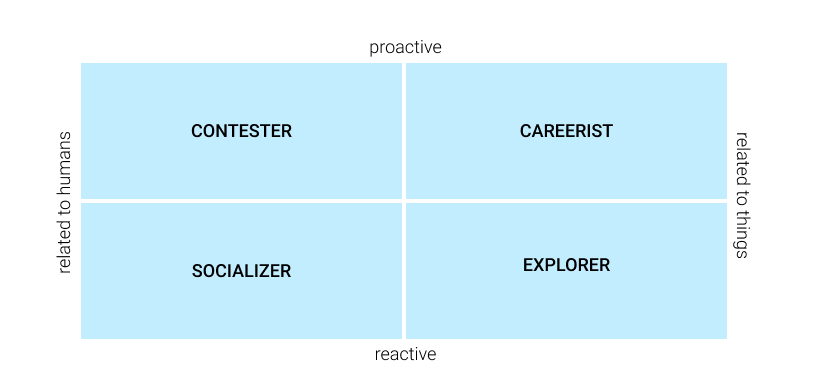Microsoft is known for its operating system, for its office software and yes, for its total failure to gain a presence in the smartphone market, too. But what hardly anyone knows: Microsoft is also a strong example of destructive employee motivation techniques.
Meanwhile, the company has changed its internal ranking system. But for many years it led to dissatisfied employees and a toxic workplace atmosphere.
How did it come to this? Let’s start from the beginning.
In this post I will talk about the most common misconception that managers make when they want to improve employee motivation.
The problem with employee motivation
It could be so simple! Let’s assume, just for a moment, you would participate in a race. You compete against a few other runners to be the first to cross the finish line.
Shortly before you reach the finish line, you peek over your shoulder. Another runner is closing in on you! As a result, you are more motivated than ever, pushing strongly to not let your competitor take your win away!
Competition is motivating, there is no doubt about it. Or, is it?
The problem is that this example cannot be applied to the business world without a few important changes. Employee motivation just doesn’t work that way.
However, it is exactly what many companies do.
Competition only motivates for a short time
Competition provides a short but strong motivational boost. You see your opponent three steps ahead and are therefore motivated to run even faster.
This competitive design works, because even professional runners don’t race every day. Additionally, they run not only to win, but also because there are other aspects to their sport that give them fun and fulfillment.
Employees, on the other hand, go to work every day. A little competition every now and then can be fun. But imagine that every single day is a race and, let’s say, the best 10% win. That means that, as a result, 90% lose. Every day.
How is that supposed to be motivating?
But there is more than that. Not only is continuous competition tiring and demotivating. In addition, only few people are actually receptive to competition as a employee motivation technqiue at all.
Competition does not even motivate everyone
To understand this, it helps to have a look at the player types originally designed by Richard Bartle. I changed the model a bit, but the basic idea remains the same.
Let’s look at the graphic below.

4 Human Types
The axes of the diagram draw two continuums.
It goes all the way from focused on humans (left) to focused on things (right). And from proactive (top) to reactive (bottom).
On the basis of these axes, people can be easily divided into four categories.
- Contestants are very competitive, like to measure themselves against others and like direct comparison. But: They make up only 5-10% of the population.
- Careerists are focused and persistent. They work hard, long and are generally very goal-oriented.
- Socializers like to interact with others. They have a great need for communication and want to know how their fellow human beings are doing.
- Explorers like to constantly discover something new. They are curious about everything and love to find out how things work.
Most people don’t only fall into just one category, but are a combination of two or three. However, most of the time, at least one type is the primary one.
Competition generally appeals to the Contestant type, even though they only make up for a very small part of the whole population.
In short: It’s very likely that most of your employees are not Contestants, which means that competition as a technique to motivate employees will fail miserably.
Often times, managers are Contestants
Many managers and people in leadership positions in general are Contestants. As a result, they like competition and also like to compete against other people.
It is often exactly these people who have to think about how to motivate their employees. In doing so, they conclude from themselves to others – and consequently, come up with competiton as their employee motivation technique of choice.
But just because they find competitions motivating, doesn’t mean that everyone else does, too!
Those teams that consist of many Careerists, Socializers and Explorers will not be motivated by constant competition. In fact, those people might actively dislike it.
Competition is a terrible employee motivation technique
Let’s say a company comes up with the following program: At the end of each year, the best 20% are promoted and the worst 10% are fired. In other words: This is a non-stop competition.
As a result, here is what happens
- The competition leads to employees sabotaging each other – nobody wants to be among the worst 10%
- Mutual trust drops
- People who don’t belong to the Contestant type (about 90% of all employees) find the competition demotivating
- Executives actively recruit bad candidates and reject good candidates to increase their chances of reaching the top 20%.
Who would introduce such an employee motivation technique?
As it turns out, Microsoft did.
Employees have described this „stack ranking“ system as one of the most toxic and destructive business experiences they have ever had.
This does not mean that competitions are bad per se. It is very much possible to achieve short-term motivational boost. But only if the competition is limited in time.
If you want to implement a ranking system or even leaderboards in your teams, you need to be very careful in choosing the right design.
